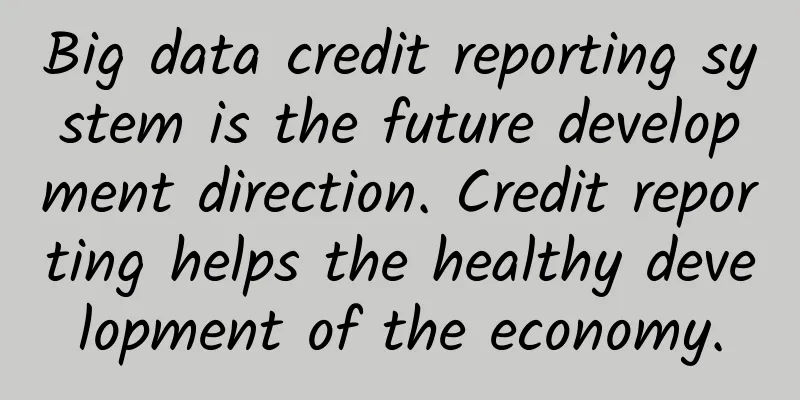The Ice and Fire of IT Infrastructure! Do you understand the 6 hot trends and 5 unpopular trends?

|
The COVID-19 pandemic has put tremendous pressure on the IT community, but it has also vindicated a range of infrastructure choices made by those who paid attention to new trends. For many companies, the cloud has proven to be a panacea for the changes caused by the pandemic. Early adopters who boldly invested in RPA and artificial intelligence were able to proactively respond when the epidemic broke out, and were in a favorable position to promote their applications and automation has also been greatly developed. Nevertheless, pandemic or not, IT departments can never be complacent. Change often comes suddenly and is a permanent part of the industry. Change in IT is accelerating.
The departments responsible for managing code and keeping systems running smoothly are naturally very cautious. The highly nervous innovators in the "skunk works" will conduct experiments for the sake of change. When everything in the company is running smoothly, it is particularly important to keep the infrastructure and operations stable. However, recently, many new strategies and tools have emerged to change the way the heavy work of keeping servers and networks running is done behind the scenes. Some of these trends are driven by new innovations, some by pure economics, and some by reality. All reflect how IT infrastructure departments are trying to become more secure and faster without sacrificing stability. Hot Trend: Hybrid CloudThe benefits of moving programs out of server rooms and into the cloud have long been recognized. Farms of rented computers maintained by others are ideal for intermittent computing and workload fluctuations. There are always questions about trust and security, but cloud vendors have carefully addressed these issues with dedicated teams, which makes economies of scale possible. If one cloud is good, why not two or three? Supporting a hybrid cloud may require more work, but if developers are careful when writing code, they can avoid the dangers of vendor lock-in. Finance departments will welcome the opportunity to benchmark software across a hybrid cloud to identify the cheapest vendor for each workload. Cooling: Dynamic WebsitesThe World Wide Web started with static files. A web server received a URL and responded with a file that was the same for everyone. This simple mechanism quickly fell out of favor when developers realized they could customize what a user saw when they visited a certain URL. Web pages no longer had to be the same for everyone. Users liked personalization. Advertisers liked flexibility in their ad placement. Businesses wanted the new opportunities that a dynamic web would present. So, elaborate frameworks were created to help create customized pages for anyone who needed them. Lately, that view has changed as developers and businesses have realized that despite all the options, most web pages end up looking pretty much the same to everyone. Is all the overhead of creating smart server logic worth it? Why not take advantage of powerful, high-speed edge content delivery networks and send the same information directly to everyone? More and more intelligence is being pushed to the edge of the network. Some of the latest web development tools can now pre-extract your site into a folder containing static pages, giving you the flexibility to run a dynamic content management system at the speed of static files. However, the result is not completely static, as there is some JavaScript that can dynamically fill in holes and use AJAX calls to collect some custom data. Hot: Managed blockchainA big part of Bitcoin's original vision was a decentralized economy without a hierarchy of power. However, the price of Bitcoin is very high because Bitcoin relies on a mathematical race that is constantly scaling and very energy-intensive. Newer blockchains require alternatives that are less energy-intensive than just inserting a new row in the database.
Some want to simplify the system by distributing power based on the number of coins you own (in other words, your stake in the system). Some want to tax or "burn money". Others want to measure it in disk storage instead of electricity consumption. A small number just want to build special trusted timers. The cheapest solution might be to forgo a completely open competition and select management teams that must reach consensus. Distribution is still happening, but only to a select few. This might also be of interest to enterprises looking to build blockchain into their business operations: a few selected parties reach consensus on the authenticity of business transactions on a shared ledger. Cooling: Wasting EnergyBitcoin miners aren’t the only ones worried about electricity costs. Microsoft, for regulatory reasons, didn’t build a large data center in the Columbia River Valley, where electricity is cheap thanks to a large hydroelectric dam. From the smallest IoT sensor to the fastest server with terabytes of memory, everyone is watching the ups and downs of power consumption in the hardware stack. Enterprises with local servers may be the biggest winners, at least during the cold winter months. The waste heat generated during computing can be reused to heat buildings. Trending: ServerlessDevelopers have long wanted full control over their environment. That's because if they can't nail down the distribution and version numbers, they can't guarantee their code will work properly. Too many people have learned the hard way that inconsistency can be fatal. So they want root access to the machines they control. All those copies of the same files made everything run smoothly, but it was inefficient and wasteful. New serverless tools remove all the heavy lifting from the system. Now developers can just write to a simple interface that loads their code when needed, and only then are they charged for it. This is perfect for jobs that run occasionally, whether it's background processing or a website that doesn't get much traffic. No need to live on a server with a full operating system taking up memory but doing nothing. With the serverless model, it is also easier to push computation to the edge of the network. Companies like Cloudflare and AWS have also taken small amounts of serverless code and launched them on ISP servers close to the user. Latency is reduced and responses are better because fewer packets need to travel long distances. Cooling: Thin componentsDevelopers typically create their masterpieces by connecting together a collection of smaller components and libraries. Each part contributes something to the overall package. Many components are off-the-shelf products, such as databases and popular APIs. It’s not uncommon to see dozens or even hundreds of parts working together to present a unified web page to the user. Lately, though, the products themselves have gotten smarter as developers add more functionality. For example, some databases integrate more tightly with the web and sync with data stored on the client, so there’s no need to build that functionality. Features like transpilation are now merged into other tools. As apps and services grow, the glue code and customization fade away. Sometimes it becomes a configuration file, sometimes it disappears entirely. The flowchart still contains the same functionality, but it’s larger overall, with fewer pieces to integrate and keep on top of. Trending: Ethical, green AIWho doesn’t want to be more ethical? Who doesn’t want to be more environmentally friendly? Lately, people have been insisting that it’s not enough for artificial intelligence to just provide useful models, it should also have moral qualities. The bad news is that ethical standards are hard to define and even harder to enforce. Some people point to the output of an AI, insisting that its output should conform to some predetermined model. But if you already know the answer you want, why bother asking an AI to find the answer you want yourself?
It's much easier to find a green version of AI, if only because the standard definition tends to use less energy, and energy consumption is easy to measure. Reducing electricity consumption is a big change for the power industry. For the past few decades, when it came to machine learning and AI, the more comparisons, the more computation, the more training data, the better. If you want to get the most out of AI, scaling up is one way to get better results. However, more computation consumes more electricity, and many companies are beginning to question whether it’s necessary to use a large algorithm with a large carbon footprint. This has prompted AI developers to test whether they can return results that are almost as good — or at least good enough without driving the meter (and the subsequent cloud or on-premises costs) crazy. Cooling down: Basic repositoriesIn the past, it didn’t take much to maintain a code repository. If you kept a copy of the software and tracked its changes over time, everyone would be surprised. Now, developers expect the repository to push their code through a pipeline that can include anything from basic unit tests to complex optimizations. It’s not enough for the repository to be a librarian. It must also be a steward, a fact-checker, a quality control expert, and sometimes even a policeman. Smart development teams rely more on the repository to enforce the rules. Some development teams are writing rules about good coding practices, while others are trying to figure out whether the code has been adequately tested. All of this makes the repository more than just a safe space. It’s more like a referee, a quality assurance engineer, and even a grammar police all in one. Trending: Zero TrustIt’s been decades since Intel legend Andy Grove wrote “Only the Paranoid Survive,” and security professionals are finally having to do the impossible job of keeping company secrets from being compromised when everyone starts working from home. The new model that some are embracing is called "zero trust," which means there is no safe space anywhere. Every laptop should be assumed to be logged in from some sketchy coffee shop in a country teeming with hackers from competitors. Even the PC on the CEO's desk should be the same. As soon as packets leave the machine, they should be encrypted and tested for authorization. Just because someone's machine is logged into a virtual private network doesn't mean you can let down your guard. Cooling: A trusted partnerIt's not just cloud providers that are driving away paying customers. Google's new union announced that it wants a say in who can buy Google services. Yes, most of us can keep our heads down and hold our anger, but how do we know if the tide is turning against our business? DevOps teams are asking tougher questions of cloud companies and their service providers. They’re demanding better guarantees. In the past, everyone was enamored with the idea that machines could be rented out instantly. No one bothered to think whether that also meant being marginalized instantly. That’s the case now. For example, one cloud computing company created a "catch-all" clause that prohibited sending "low-value emails." In the past, no one thought about the value of emails. Now people are wondering if such a general clause is intended to block everything. Trust is eroding. This eroding trust means that long-term relationships require more closely negotiated contracts that don't allow for as much wiggle room. Heat Trend: AutomataIn the past, people needed to write some code to get the job done. Someone had to go through the variables and remember all the rules about types, scope, and syntax. New tools like "robotic process automation" are changing that. There is no robot like C3PO, though; it just fleshes out the data manipulation routines. Now, savvy non-programmers can do a fair bit of the work using tools that eliminate most errors from the development process. Anyone who can add a column to a spreadsheet can produce some elaborate interactive results with a few simple clicks, without worrying about downtime. |
>>: Scientists convert Wi-Fi signals into electricity to charge devices
Recommend
Computer Network: ICMP Protocol (Internet Control Message Protocol)
Today I will talk to you about the knowledge rela...
The strength of the WiFi signal is related to this core factor. Don't get it wrong.
When buying a wireless router, you should buy one...
RAKsmart: 30% off on all VPS, popular Los Angeles/San Jose VPS starting at $0.99 per month
RAKsmart has launched this month's promotion,...
2021 China Internet Haha List 2: Top Ten Events
In 2021, the Internet industry has emerged with m...
Kvmla's 10th anniversary: 50% off for annual VPS and 20% off for monthly VPS, old users get 100 off for 500 RMB, 15% off for Singapore/Japan dedicated servers
Kvmla has not released promotional information fo...
How to attract and train talents in the era of the Internet of Things
We are experiencing a worldwide war for talent wi...
AkkoCloud: San Jose CN2 GIA/Germany CN2 GIA, starting at 299 yuan per year, 300-500Mbps bandwidth
AkkoCloud is a Chinese hosting company founded in...
In-depth analysis of computer networks and operating systems: essential knowledge analysis for interviews
Computer Network What is TCP congestion control? ...
Wu Hequan, Academician of the Chinese Academy of Engineering: IPv6 will become the carrier platform of the new generation of IT and will develop in parallel with computing power network
[[432879]] The 2021 China Mobile Global Partner C...
Edge computing has reached its climax! See how the three major operators fight the edge war
With the advent of the Internet of Everything era...
5G network needs to save money by relying on these four key technologies
[[385335]] This article is reprinted from the WeC...
What is the 5G Open RAN Policy Alliance established by Microsoft, Google, Samsung and other giants?
According to foreign media reports, the Open RAN ...
As the natural environment becomes increasingly harsh, underground data centers are becoming a trend
Scientific research over the past few decades has...
Application of 5G IoT in Commercial Buildings
The long-awaited 5G technology is finally here. I...
Ruijie Cloud Desktop solves financial development and testing problems and is praised by Yixing Rural Commercial Bank!
Technology drives the transformation of the times...









